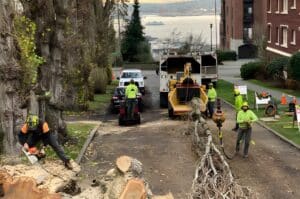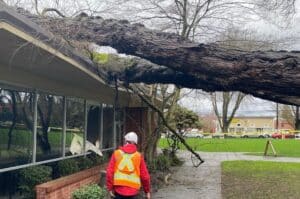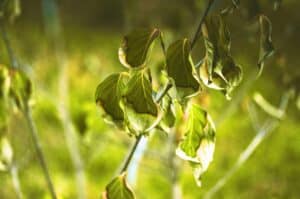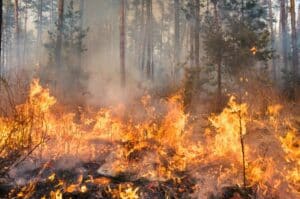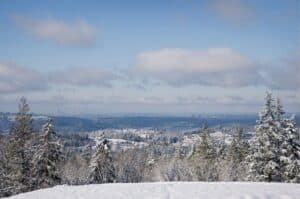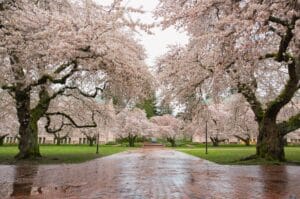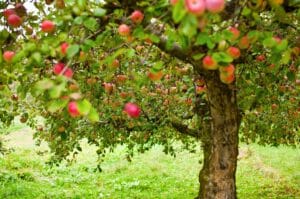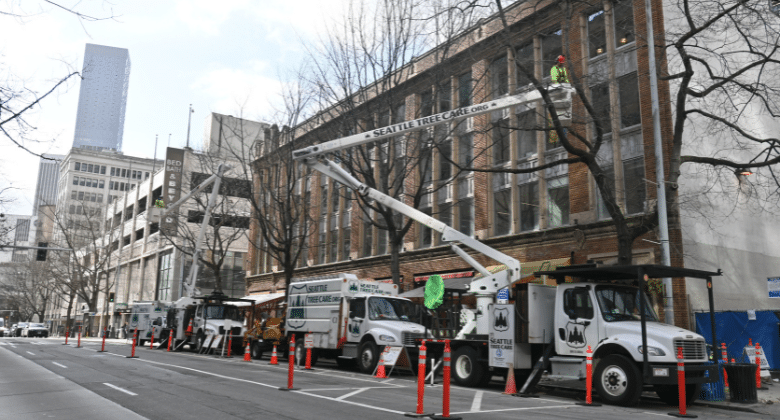8 Summer Tree Care Tips for Seattle Homeowners
Follow these summer tree care tips to keep your trees thriving during Seattle's increasingly hot, dry summer months.
Most Seattle residents love the warm days and ample sunshine of summer. But while this warm season may be a favorite for us, it can be a difficult time for our trees. With less water, more sunshine, and higher temperatures, summer tree care becomes an important consideration as our trees undergo a period of relative stress, especially as the average summer temperatures rise in our area.
To keep our urban and residential trees healthy, strong, and looking their best, here are eight summer tree care tips for the Seattle area.
Summer Tree Care: Key Highlights
- Discover why Seattle’s unique summer climate can stress your trees and learn simple strategies to keep them thriving through the warm, dry months.
- Uncover the secret to creating a tree-friendly microclimate in your yard, transforming isolated trees into lush, resilient landscape features.
- Master the art of summer tree watering with expert tips on irrigation techniques that promote deep root growth and drought resistance.
- Learn to spot the early warning signs of pest infestations and diseases that prey on heat-stressed trees before they become serious problems.
- Find out how proactive summer tree care can safeguard your property against storm damage and costly tree emergencies year-round.
1. Understand How Seattle’s Summer Weather Impacts Trees
First and foremost, you need to understand our local climate in Seattle and the greater Puget Sound area and how that affects your trees.
During summer, the area experiences long daylight hours and generally dry conditions, as most of our annual rainfall occurs during the fall and winter months. The dry summers mean that trees in Seattle can be particularly vulnerable to drought stress. Supplemental watering becomes increasingly important to keep trees happy and healthy.
Also, the extended daylight hours, while beneficial for photosynthesis, can increase the rate at which trees lose water through evaporation and transpiration. This makes it even more important to ensure trees are properly hydrated.
The fluctuating temperatures and occasional heat waves can also stress trees, especially those that are not native to our region. Along with drought stress, it’s important to be aware of heat stress in your trees, how to identify it, and how to mitigate it.
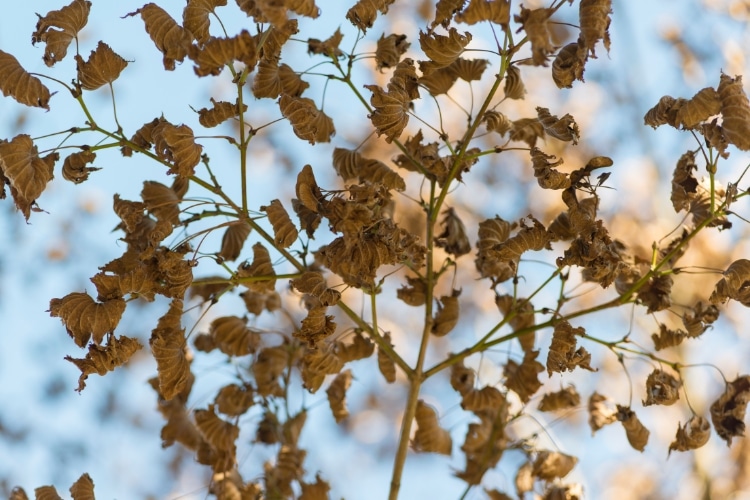
2. Identify and Mitigate Heat Stress in Trees
Heat stress can manifest in various ways, including wilting leaves, scorched foliage, and premature leaf drop. Trees in urban areas, like Seattle, might also suffer from the urban heat island effect, where paved surfaces and buildings retain heat, further exacerbating stress on trees.
Adequately watering your trees, especially just before and during heat waves, is one of the most important things you can do to mitigate the effects of heat stress.
If you have younger trees in your yard, you can also create temporary shade for these vulnerable trees by using shade cloth to reduce direct sun exposure and lower the temperature around the tree.
Create a Microclimate Around Your Trees
To reduce the effects of heat stress in a more permanent way, consider additional plantings around your trees. Many homeowners have trees that exist in isolation in the middle of a lawn. These trees are planted in an unnatural way and may be more susceptible to heat stress.
But you can reduce this effect by planting other small trees, shrubs, and flowers near the base of your tree. In other words, you are creating a more supportive microclimate around the tree, which may make it less susceptible to extreme weather patterns in both the summer and winter.
Doing this helps shade the roots of your large trees and helps to stabilize the temperature of the soil and roots. It can also enrich the soil and manage moisture more effectively.
3. Prevent Drought Stress with Effective Irrigation
As with any living thing, water is essential to the life and health of a tree. Even established trees need water to flourish.
The best way to do this is to use a soaker hose so the water can slowly filter through the soil and down to the roots. Contrary to popular belief, most tree roots are only a foot to a foot and a half below the surface.
When you water, consider fewer, deeper waterings. Allow water to soak the area under trees thoroughly. Deeper, less frequent waterings promote deeper root growth. Just make sure not to overwater your trees.
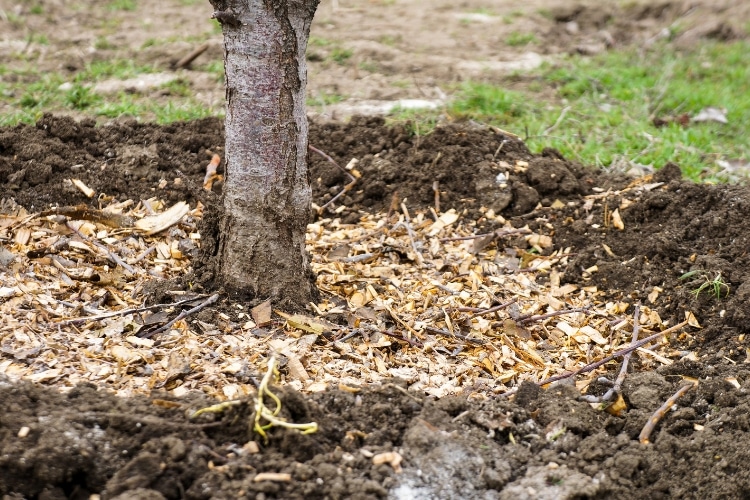
4. Surround Trees with Organic Mulch
Summer is a good time to inspect the mulch around your trees and, if necessary, replace it or top it up. Why? Because mulch helps manage soil temperature and retain water, helping trees stay hydrated throughout the dry season.
When using organic mulch (which you should, as synthetic mulches or gravel can be harmful to trees), you can expect your mulch to decompose over time. Depending on the type of mulch you use, you may need to reapply it every 6 to 24 months or so. For example, shredded wood mulch breaks down more quickly than bark chips.
How to Apply Mulch Correctly
If done incorrectly, mulching can be detrimental to the tree’s health. Follow these simple guidelines and your trees will be healthy and growing:
- Inspect: Check the depth of any mulch around your trees to see if there’s at least a 3-inch layer.
- Clean: Clear away old mulch and debris from the trunk and root area. This includes any grass or weeds among the roots.
- Place mulch: Use a medium ground mulch and place it only 2-4 inches deep. Any depth greater than 4 inches can smother the roots.
- Stay away from the trunk: Allow the root flare (the spot where the trunk widens just above ground level) to be open to the air; it should always be visible so keep mulch about 6 inches from the trunk of the tree. In other words, make a mulch donut around the tree trunk. Don’t pile the mulch or create a mound against the trunk of the tree! Mulch gathered around the trunk can invite pests and diseases to attack the tree.
See our Guide to Types of Mulches & How to Use Mulch Properly
5. Make Sure Trees Have the Nutrients & Organic Matter They Need
The health of your soil determines the health of your trees since this is where their nutrients come from. And in urban and suburban areas, like most of our neighborhoods in the Seattle area, the soil is generally lacking in nutrients.
For healthy, strong, and beautiful trees, especially in the warm, dry PNW summers, soil fertilization and/or organic soil amendments are critical. Good, fertile soil can bolster a tree’s ability to resist pathogens and pests, and can help it better resist drought and heat stress.
While tree fertilization is best done in spring or fall, sometimes trees need a little boost in summer. Evaluate your trees carefully for signs of nutrient deficiencies or other indicators of poor soil health. If they look fine, there’s no need to fertilize (over fertilization can be as damaging as under fertilizing).
Before applying fertilizer in summer, always conduct a soil test to determine what is present and what is missing from your soil. With that knowledge, you can buy and apply the ideal summer fertilizer for your trees.
If you want to make this process as easy as possible, the team here at Seattle Tree Care specializes in applying soil amendments to maximize tree health.
To ensure your trees are getting the right nutrients at the right time, check out our Guide to Landscape Fertilization.
6. Take Preventative Action Against Tree Pests and Diseases
When trees undergo additional stress, such as heat or drought stress, they become more vulnerable to pests and diseases. While tree pest and disease inspection are a job for a professional arborist, there are signs of a serious tree problem that you should be able to recognize yourself.
The easiest thing to spot is damage to or problems with leaves. Chewed, distorted, or oddly colored leaves are all signs of potential pest or disease problems. You may also notice problems with the bark or trunk, such as holes in the bark or tree branches that could indicate the presence of boring insects.
Damage to the bark, bark falling off the tree, or a sawdust-looking substance at the base of the tree are also major signs of pest damage. If you notice fungus growing near the base of the tree, branches dying, or canopy dieback in any capacity, you may have an insect or disease problem.
If you notice any of these signs, it’s time to contact a tree service company for a professional diagnosis and treatment recommendations. At Seattle Tree Care, our ISA certified arborists specialize in the pathogens and pests that plague trees here in the Puget Sound area. Have our team inspect your trees as soon as you notice any pest or disease symptoms.
You can also use local resources like the King County Master Gardeners program or the UW Plant Answer Line to learn more about what may be impacting your tree.
7. Prune Dead or Dying Branches to Promote Tree Health
One of the best ways to support trees in the summer is by removing dead or dying branches from the canopy. While major pruning should ideally happen when trees are dormant (winter or early spring), summer pruning may be necessary to remove dead or hazardous branches.
This lowers the risk of falling branches the next time a storm blows through. It also reduces the chances of pests or diseases taking hold of the tree. And, if you have any spring flowering trees, these are often best pruned in the summer, just after they bloom.
For large trees, pruning is best done by professionals for the safety of people, property, and the trees themselves.
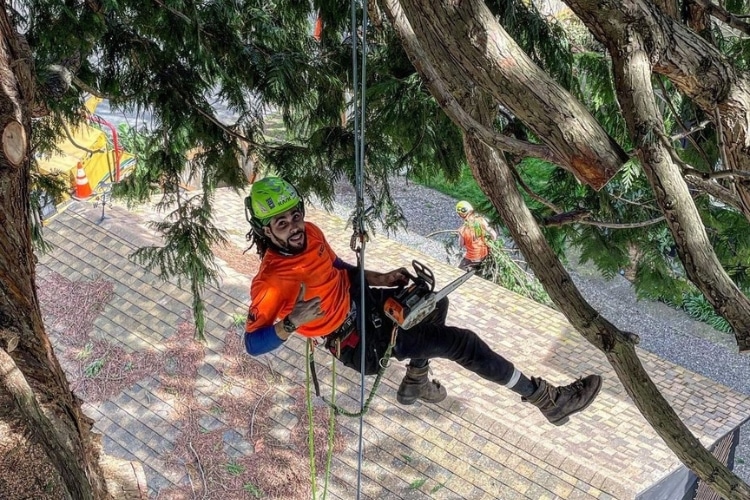
8. Prepare Trees for Upcoming Storms
While the bulk of heavy storms in our area occur in late fall and winter, it’s never too early to prepare. By taking preventive action now, your trees will be more resilient to heavy winds and rain that accompany winter storms.
Any tree can be susceptible to what is known as structural failure: splitting, cracking, or falling. While some species of trees are more prone to this sort of breakage, any tree can be impacted. This is why a tree risk assessment by an arborist with a Tree Risk Assessment Qualification (TRAQ) is imperative for proper tree care, particularly for trees close to the home.
Weak or splitting branches do not necessarily need to be removed; they can be supported through cabling and bracing. This involves putting braces through split branches and using cables to attach them to other parts of the tree for support. After installation, these structural support systems need to be inspected regularly for integrity. The arborist who installs the support system can recommend how frequently it should be inspected.
Along with cabling or bracing, your local, certified arborist can also install lightning protection to greatly reduce the risk of lightning damage to your trees and your property.
Keep Your Trees Healthy With Summer Tree Care from Seattle Tree Care
Summer is the time most Seattle residents are outside, spending time in their gardens and their yards, soaking up the sun. But it’s not the time to ignore your trees. Rather, they need a lot of attention right now as these warm months are some of the most difficult for our trees.
If you want to ensure your trees thrive this summer, call Seattle Tree Care at 206-789-0534 or fill out our online request form to have a local, ISA-certified arborist inspect your trees and provide you with the best summer tree care options available.
SEE MORE ARTICLES FROM OUR b(LOG)
We've got you covered with tips, resources, updates, how-to's, and other helpful information about trees and landscapes in Seattle, Puget Sound, and King County, WA. Join the thousands of smart local residents who get the monthly newsletter from Seattle Tree Care for helpful information you won't want to miss!
There's no spam - we promise! We are committed to keeping your e-mail address confidential. We do not sell, rent, or lease our contact data or lists to third parties.

